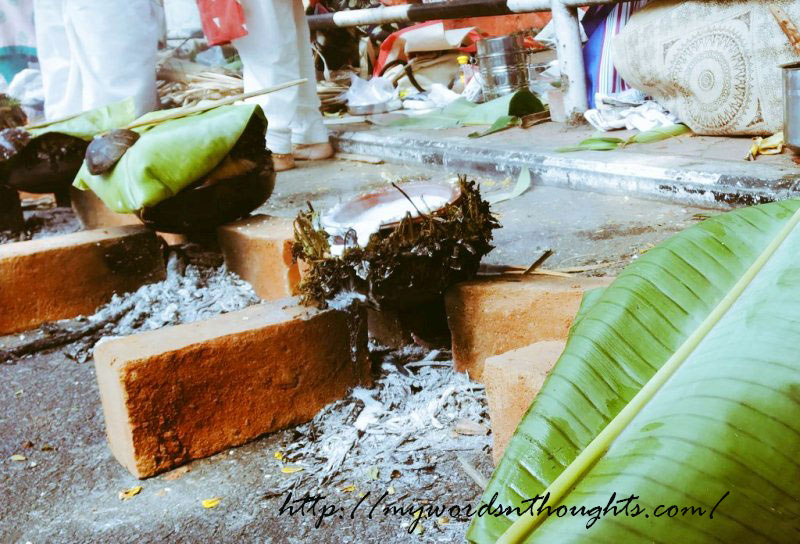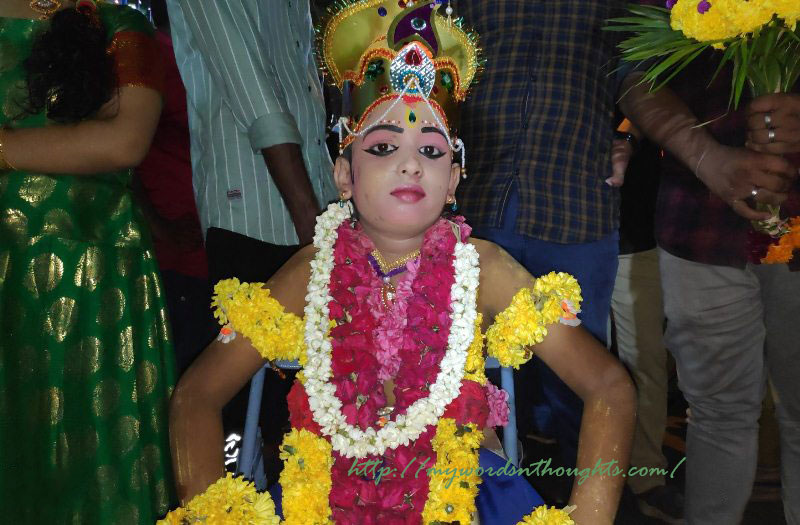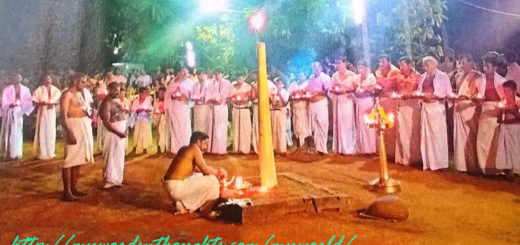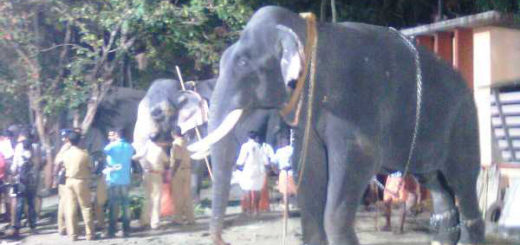Attukal Bhagavathy Temple & Pongala Festival – Some interesting facts and a few myths you may not know
There are three Sabarimala temples in Kerala, one in Pathanamthitta district, where Lord Ayyappa resides, second one in Kollam, where Chakkulathamma resides and the third one in the capital city, where Attukal Amma resides. We all know, the temple has already entered Guinness books of world records, as the single largest gathering of women for a religious activity. Read in detail about Ponkala celebrations.

When prayers boil in earthen pots along with tears in eyes, the only chant that reflects in air is ‘Amme Saranam, Devi Saranam’, and nothing else. For many decades, women have unloaded their sorrows in front of Attukalamma. On Ponkala day, there is not even a single point in Thiruvananthapuram city or its premises where divinity of the goddess is not featured. On the eve, the city has no creed, no religion or no discrimination, but only devotees and those who are open hearted to help them. Can you even imagine mosques and churches open doors for devotees, do sufficient help and even provide them food and water? I bet you, you can never find such a religious harmony across the whole world except god’s own country. Yes, we are blessed people.
Among all 16 alms prescribed in Sanathana Dharma, giving good or Annadanam/Annadan is above all. Give food and water to those in hunger. When for such a big public gathering, if people forget differences and come forward to help each other, it adds new colours to religious harmony and integrity and lifts both to another level. Isn’t it?
Attukal Ponkala is a celebration of the whole city. When you look around, you see only people who are there to do ponkala, or help them. Police, social workers and associations fully co-ordinate the whole events of the day. Some people give free food and drinks, while a few others give free ride. “I doubt if you can find any other public gathering across the world where women are given such a safety feel, respect and protection”, says Aswathi Thirunal Gaurilaksmi Bai, a member of Travancore royal family. Currently one the leading female writers in English in the country, she has published 13 books till now. These interesting facts are shared by her for a Malayalam magazine, and I merely translate it to English so that it can reach more readers.
Legends related to first ponkala conducted

Attukal temple is centuries old, and hence most legends have travelled from generations to generations – a few facts and more myths, related to the origin of temple and Ponkala celebrations. Many people still believe that Attukal Amma is Kannaki of Chilappathikaram, who burned entire Madhura kingdom. Stories say, later she moved towards Kerala, and she was taken to heaven by Kovalan in this place, and women offered rice boiled in earthen pots to please her. As per another story, she passed through this place before reaching Kodungallur (there is a famous goddess temple in this town).
Aswathi Thirunal feels two stories authentic, and she shares both. First one goes like this. One day before dawn break, some women belonging to lower caste reached on the banks on Killiyar river for firewood. There they met a woman with some sort of divinity and attraction. She was sitting in the river bank, and immersing her feet in water. When she said she is hungry, those ladies, who brought raw rice in pot, prepared a wooden hearth using firewood they collected, and cooked rice. Before day break they gave her food. She became happy and disappeared after blessing all women who were present there. Those ladies witnessed progress in life, and they had a feel that it’s a divine lady. As that lady put her leg in the river, they gave the place new name – ‘Aattukal’. Aattu/aaru means river and Kaal means leg. Thus a new custom of giving rice offering to goddess also began.
A story related to a bunch of tender coconut

Another popular legend is related to some families. Once a senior most member (Karanavar) who reached the banks of Killiyar river happened to see a girl, and felt something like divinity in her. He helped her to cross the river, and asked her to stay at his ancestral home as it was already late. As he felt that she belongs to Brahmin community, he went inside and came back with tender coconut to give her. But the girl has disappeared and nobody saw her too. Hence nobody believed his words, and said that he has gone insane.
But at that night he had a strange dream that she was goddess and that she needs a space at a corner of his home. As instructed, he made a seat with the help of a Pheon (shoolam) next day itself and protected that placed using thatched leaves (mudipura). He also conducted installation of deity that day itself. It’s a common ritual conducted in certain goddess temples of Thiruvananthapuram, where goddesses from Mudipura reach homes and bless devotees (I have seen it a lot during my childhood. But nowadays such ceremonies are rarely conducted outside temples – similar to Ayyappa Vilakk of Thrissur district). Now also people have a habit to offer tender coconut to the temple, when their coconut tree yields for the first time.
24 Salagrams were used for making the deity

The main deity (Moola Vigraham) of Attukal temple has so many features, which makes it distinguished from others. It’s a very rare ‘Daaru’ statue, and is believed that 24 salagrams are placed inside the presiding deity of Attukal Amma. How those salagrams which represent Vaishnav representations got placed inside the idol of a goddess? It’s very rare. Second is related to Padmanabha Swamy temple, and relation between the two.
A brief note on Salagram (or Salagramam in Malayalam) before we move forward. Salagrams are rare mussels or shells recovered from the bottom of some rare rivers. Some people assume them to be statues. In fact they very much resemble stones, and that’s why they are also known as Salagram stones or Salagramam shila. They are specially brought from Gandhaki river of Nepal.
Beneath the water in the river belt, a life enters the shell, which penetrates the shell in predetermined and uniform patterns. The creature makes different chakras (wheels) in the body of shell which can be classified as Eka Chakram (single wheel), Dwi Chakram (two wheels) and Bahu Chakram (multiple wheels). Salagrams are classified on the basis of face, colour, shape and thickness. It’s believed that Salagram is the principle representation (Moola Roopam or first representation) of Lord Vishnu, also known as Salagram Hari. Lingam for Lord Shiva and Chakram for goddess are other representations, and hence it’s virtually impossible to find Salagram Hari inside the deity of a goddess.
The second legend of Salagram and the temple is related to Cheras. It’s believed that a group of people belonging to Chera dynasty split and got settled in Nepal. They were mostly engaged in spirituality related observations. Interestingly Nepalese follow the same temple rituals followed in many parts of Kerala and Tamil Nadu, especially in Panchamukhi Shiva temples which proves the link.
While Padmanabha Swamy temple was under construction, King of Nepal sent 24000 Salagrams to Travancore. All those were taken from Gandhaki river of Nepal. Of those, 12,008 were used during the construction of the idol of Lord Padmanabha. It was prepared using Kadusarkkarayogam method. 24 of the Salagrams were used while making the idol of Attukal Amma. The rest were enclosed in a box, dug a pit inside Padmatheertham pond and placed there.
As per Hindu beliefs, if 12 Salagrams are accumulated at a place and worshipped for a fixed period based on Vaishnava customs, then it’s equivalent to a Maha temple, or Mahakshethram. If so, Lord Padmanabha temple has the power of 1000 Mahakshethrams and Attukal temple is equivalent to 2 Mahakshethrams.
Kalabhabhishekam, Mudipura and Thottampattu
Among the rarest rituals conducted in the temple, Kalabhabhishekam is very important. Nivedyam (food offered to the deity) is prepared and served in gold urli. Pooja rituals are conducted 4 times a day, and these customs have been followed for many centuries.
As told earlier, the place where Karanavar got Goddess’ divine power/symbol, he prepared a thatched home to install the idol, known as Mudipura in local terms. The custom is still followed to make Mudipura and Paattuthara. On Karthika star of Kumbham month, Mullapanthal is prepared using green coconut leaves to commence the annual celebrations of the temple. Kodiyirakkam or the closing ceremony is on the 10th day. On the 9th day or Pooram star, Attukal Ponkala is conducted. Auspicious day of Chottanikkara Makam lies close to Attukal Ponkala, and may fall just one day prior to it.
Chooral Kuthu ceremony of young boys is conducted in the evening of Ponkala day. It should definitely fall on Pooram day. For the same reason, in some rare occasions, Ponkala may be conducted on Makam star.

A child well-dressed at the Kuthiyottam ceremony, on the evening of Ponkala celebrations
Nature also plays mystery during Ponkala season, and still now this puzzle is unsolved. Rain plays an important role. In between Kodiyettam and Kodiyirakkam it will rain one day, most possibly on a day near to Ponkala. Aswathi Thirunal testimonies, she can’t remember a Ponkala season without rain.
It’s the largest public gathering of world across the world exclusively reserved for ladies. Though Indian cities are infamous for pollution, just visit Thiruvananthapuram city one day after Ponkala. The whole hearths, ashes and wastes will be completely cleaned within one day, with the co-ordination of locals and associations. It’s hard to imagine, millions of women made ponkala in these streets one day ago.
Till recent times, members of royal family of Travancore never had the custom to participate in Ponkala celebrations. For the same reason Aswathi Thirunal has never made Ponkala for goddess. However both her daughter-in-laws have done it.
Some people give ponkala offerings to Attukal Amma in believe that she will help them to get over sorrows and troubles of life, while a few for obituary. Some people come here and give offerings so that goddess fulfils their ambitions and dreams. There is another section who participates in event only because of faith and to seek blessings, nothing else. You can witness many people in tears and emotions, when boiling water and rice overflow from pots.
“Amme Saranam…. Devi Saranam” — Every lip chants this mantra only. After Ponkala season is over, it’s the long wait for the next season. It’s very true, if you participate in this event once, your mind will always urge to come here every year. That’s the spirituality of the Ponkala season.
You can read a few more articles on Kerala temples, with detailed description of legends and celebrations associated with them. Here is the page link. Click on the images in the gallery to read














Recent Comments